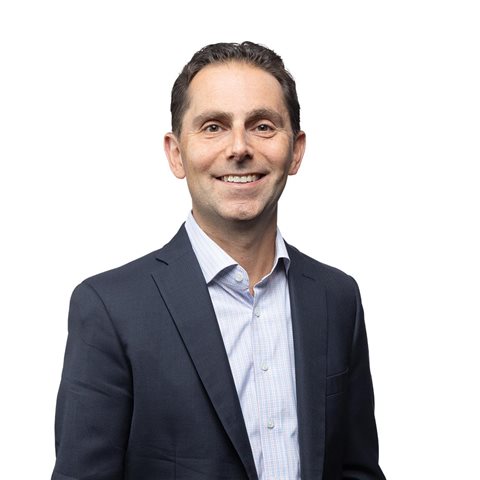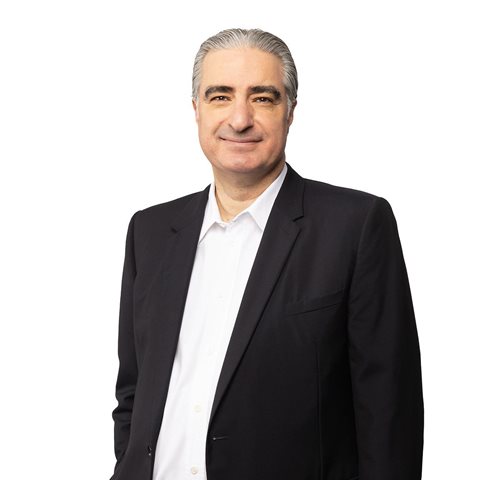The stock market offers daily lessons in animal spirits and, occasionally, something more. Every so often, investors become obsessed with a small group of companies, and clever analysts give them a name that resonates with the investing public. In the ’60s, we had the Nifty 50; in the 2010s, we had the FAANGs; and today we have the Magnificent Seven and the Granolas. The Magnificent Seven are tech companies, by and large: Alphabet, Amazon, Apple, Meta Platforms, Microsoft, Nvidia, and Tesla, a tech-forward car company.1 The Granolas, a group of European companies, are more varied: GSK, Roche, ASML, Nestlé, Novartis, Novo Nordisk, L’Oréal, LVMH, AstraZeneca, SAP, and Sanofi.2
Cute nicknames are a bull market phenomenon; some would say they’re a clear sign of a bubble. We don’t have a view on that. Instead, we’re interested in the fundamentals of performance and competitive advantage that have captured investors’ fancy. Last year, we outlined the idea of a superpower: an integrated set of people, processes, and technology that creates value by helping the company do something better than its competitors.
What does a superpower look like in real life? Think of any company that you admire, then reflect: Why do you feel this way? It’s very likely because of an institutional capability—a superpower—that makes the company uniquely successful. Toyota has historically been revered for its lean manufacturing strengths. Disney is a paragon of imaginative customer experiences. Progressive is broadly admired for its analytics-based pricing of auto insurance.
Today, investors are zeroing in on the superpowers that many of the Granolas and the Magnificent Seven have built. Consider ASML and its unique chip-making equipment that is powering the latest leg of growth per Moore’s law, and Nvidia, whose vision in software and chips has lifted it to the top of the AI world. Apple’s careful nurturing of an iPhone ecosystem is the stuff of legend.
In our experience, the companies that successfully build these kinds of distinctive capabilities tap six elements: vision, employees, culture, technology, organizational structure, and routines. As a bit of shorthand, we call this the VECTOR approach. (Busted: it’s our own attempt at a cute nickname.) In the year since we first developed this approach, we’ve become even more convinced of its efficacy. According to a recent McKinsey survey, respondents from companies whose transformations included efforts to build technical and execution skills for employees are 1.5 times more likely to report outperforming peers. At companies that made sure to implement new routines and processes, the figure was 1.6 times. And those companies that created new technologies that make it easy for employees to apply their new skills were 3.8 times more likely to report outperforming peers.
Getting to superpower status isn’t easy. We’ve seen the pitfalls and challenges that companies experience as they seek to lift themselves out of congested markets. In this article, we’ll look at those pitfalls and the solutions that leading companies have found to get past obstacles and achieve a long-term lead over their rivals. We’ll draw on what we’ve learned by studying companies such as Amazon, ASML, LVMH, Microsoft, Nestlé, Netflix, Novo Nordisk, and others. Each has built a superpower (some have built several); their experiences can be instructive for executives looking for the missing ingredient that could lift their companies to the top.
Vision and leadership
Most organizations start the process of building a superpower by developing an enterprise road map that covers the next two to three years. The road map includes plans to embed and scale the institutional capability across the organization with top-team commitment. But what about the long term? Here, a lot of companies’ plans break down. To build a successful superpower, companies need to articulate the value they hope to create, not just next year but ten years from now, and link it to the economics of their business models. The basic question is simple: As the company evolves, can it expect an ever-larger impact from its superpower? Top companies continually expand the capability to maintain a competitive edge.
One lesson comes from luxury goods, an industry in which fashions change but brands are forever. LVMH, the French luxury giant, is built on core brands that are simultaneously ancient and thriving: Louis Vuitton was founded in 1854, and Moët & Chandon was founded in 1743. All told, the company embraces more than 75 distinguished brands across sectors that vary from leather goods and fashion to wines and spirits. The patina of age lends authenticity and intrinsic value to its products. As CEO Bernard Arnault put it, “I have great admiration for the iPhone. I have myself an iPhone. But can you say that in 20 years, people will still use an iPhone? Maybe not. What I can say is that 20 years from now, I’m quite convinced that people will still drink Dom Pérignon.”3
Other luxury brands are also old and distinguished. What’s different about LVMH? The company promotes its history and its future simultaneously. For the former, it emphasizes attention to detail, artisanal techniques honed over centuries, and the heritage of its brands. The historical roots and traditions of each brand are always highlighted as part of their identities. It matches this with a commitment to perpetuating its advantage, as described in its long-term vision: “Each of the group’s 75 maisons must cultivate the highest level of quality, not simply to maintain it year after year but also to elevate it as we continually set even higher standards.”4
Amazon arrived on the scene about 200 years after Veuve Clicquot, one of LVMH’s ancient brands. But it too has a vision for the future, famously expressed in its goal to become “Earth’s most customer-centric company, best employer, and safest place to work.”5 That vision was sufficiently captivating that the company could ask investors to tolerate acute losses in the early years as it reinvested all spare cash flow to realize its vision. Over time, that vision morphed a little, but it always featured a convenient shopping experience, built by teams trained to think it’s still day one and that there are always new inventions to find that will please the customer. That ambition to keep an ever-growing employee base “customer obsessed” became Amazon’s superpower, as new employees learned that the path to success in any new or existing team was to start with the customer and work backward.
Employees
People are typically the most significant investment of an organization. Without the right skills, the best-laid strategies go for naught. Companies typically invest up front in large-scale change programs for leaders and perhaps in targeted technical-skill building for line managers. But if these programs are just one-off events and don’t scale beyond the initial team, it may not be possible to build a sustained advantage.
Leading companies develop skill-building journeys for people throughout the organization and in that way sustain institutional knowledge—for example, through a corporate academy. These companies see this work as part of a multiyear strategic-workforce plan that outlines talent needs over a period of several years. By considering various factors such as roles, skills, hiring, and reskilling, an organization can ensure it has the right workforce to achieve its long-term vision for the institutional capability.
LVMH invests heavily in training across the organization. It consciously works to identify and nurture gifted people in every job track: creatives, craftspeople, and customer-facing roles. Its signature training program is L’Institut des Métiers d’Excellence, an apprenticeship program that has taught over 2,700 employees in 27 different disciplines spanning craftsmanship, creative tasks, and client experience leadership. It supplements this core program with others, such as Hublot’s four-year apprenticeship for new watchmakers. The company is dedicated to in-house mobility for talent; for example, after they prove themselves in one of the smaller brands, talented creative directors are tapped to take the reins at a larger brand.
Beyond formal systems, LVMH challenges and supports employees in other ways. CEO Bernard Arnault is famous for putting himself in employees’ shoes. It’s common for store managers to receive a memo from Arnault commenting on the placement of a sofa in the store or its fabric. His advice to executives? “Don’t go to the offices too much. Stay on the ground with the customer or with the designers as they work. I visit stores every week. I always look for the store managers. I want to see them on the ground, not in their offices doing paperwork.”6 The top team will also throw its weight behind managers and make sure that corporate initiatives don’t stand in the way of brand leaders’ vision and focus on the customer.
Culture and mindset
From our research, we know that organizational health is critical to long-term performance, with healthy organizations delivering three times the total shareholder returns of unhealthy organizations, regardless of industry. When aspiring to build an institutional capability, organizations often assess their organizational health and take on board the changes needed to reset the culture for experimentation and building. These are typically discrete mindset and behavioral shifts to help employees embrace the new capability in their day-to-day work. Where most organizations fall short is embedding these target mindsets into the backbone of the people structure: the HR processes. By incorporating essential mindsets into hiring, leadership models, and feedback, companies can target moments that matter throughout the end-to-end employee life cycle.
Netflix’s superpower is its revolutionary talent management system. It favors people over processes; it treats managers as responsible adults and gives them the freedom to make decisions for their parts of the business. It asks people to rely on logic and common sense, rather than fall back on policies. It rewards high performers and famously says that “adequate performance gets a generous severance package.”
The company eliminated formal reviews, seeing them as too ritualistic and infrequent. Instead, it moved to informal 360-degree reviews, whereby employees are asked to identify activities the company should start, stop, or continue. It emphasizes the core role of managers—their most important job is to build a great team. And it asks that HR managers prioritize innovation, believing that a creative HR function will create more value for the company.
Nestlé is a global food and beverage giant, with CHF 93 billion in annual sales, a presence in 188 countries, and over 2,000 brands. That’s significant reach for a company that started in 1866 by selling condensed milk. What’s the company’s superpower? We would argue that it’s an entrepreneurial culture dedicated to finding new sources of growth and moving quickly to establish and expand a presence in these areas. Time and again, Nestlé has empowered its managers to invest in consumer trends that are just about to take off. In the 1950s, this meant new convenience foods like Nesquik. More recently, it has meant areas such as early-life and therapeutic nutrition, alternative proteins, coffee, and systems technology. Its gambit in coffee, Nespresso, rewrote consumers’ coffee experiences and has resulted in a business with $6 billion in annual sales, annual organic growth of 5 to 20 percent, and a platform for a “string of pearls” M&A strategy.
Does anyone need an introduction to Microsoft? Probably not. It’s been featured on billions of corporate desktops and laptops for most of the 49 years of its existence. Microsoft’s original superpowers were excellence in engineering and sales: it made products that work and placed them everywhere. But the company has shifted its focus in the past decade or so. Its new superpower is a growth mindset.
Stanford professor Carol Dweck did the research on this idea. People “who believe their talents can be developed (through hard work, good strategies, and input from others) have a growth mindset. They tend to achieve more than those . . . who believe their talents are innate gifts.”7 Microsoft CEO Satya Nadella has put this concept at the core of his company; he calls it “learn it all versus know it all”8 and wrote about it extensively in his 2017 book Hit Refresh (Harper Business, September 2017).9
It’s a powerful idea, and we see echoes of it in other tech companies’ philosophies; the culture of experimentation is everywhere in Silicon Valley. But Microsoft’s version adds a layer of empathy. It’s not just about learning from mistakes; it’s about learning from every perspective. In 2014, in Nadella’s telling, he flubbed a question about equal pay for women; he said that women should “have faith” that “the system” will eventually reward them.10 Oops. That very day, he wrote an email to Microsoft to say, “I answered that question completely wrong. Without a doubt, I wholeheartedly support programs at Microsoft and in the industry that bring more women into technology and close the pay gap.” The episode is a demonstration of the “learn it all” philosophy that underpins the growth mindset and an example of role modeling from an inspiring CEO.
Technology
Here’s a quick question: How many times have you heard a company in a random industry proclaim that they are now “a technology company”? It’s very much in vogue, and these companies are not wrong to try it. But success is elusive. What companies often fail to appreciate is the challenge of hard-wiring technology into core workflow systems, which is the subject of our 2023 book Rewired: The McKinsey Guide to Outcompeting in the Age of Digital and AI (Wiley, June 2023). Building a superpower without technology is next to impossible; building one with technology that isn’t well integrated into the enterprise is only slightly easier.
Amazon invested heavily in a decentralized software platform relying on APIs that teams across the company could access. That helped it start more businesses and grow faster. It’s an essential underpinning that makes all the other well-known features of the company possible, such as its customer obsession, day-one culture, and “working backward” approach that company leaders look for to determine the merits of a proposal. If leaders approve an idea, managers can build it in weeks or months, not years, because of APIs and the decentralized software structure. Amazon didn’t stumble into this concept. It stopped several projects in the early 2000s when it realized it couldn’t grow very quickly beyond books and media if it didn’t decentralize the platform. (And while they were at it, Amazon’s leaders realized other companies had the same problem. So they built Amazon Web Services to offer this kind of infrastructure to others.)
ASML, the semiconductor equipment company, also embedded technology into its core workflow systems. Founded in 1984 by two Dutch companies, electronics giant Philips and chipmaker ASM International, ASML had one thing in mind: to provide semiconductor companies with the most advanced and economically attractive lithography equipment (the machines that use light to prepare the substrate for the eventual etching of the billions of transistors entailed in a modern integrated circuit). It has succeeded in that mission, registering sales of €27.6 billion in 2023 and a gross margin of just over 51 percent.11
ASML’s superpower is technology leadership. It has built its edge in a few ways, starting with close alignment with industry leaders such as Intel, Samsung, and TSMC; world-leading system integration capabilities; and deep partnerships with suppliers. To maintain its edge, ASML made a series of strategic acquisitions that enhanced its capabilities and expanded its product lineup. Notably, ASML acquired Silicon Valley Group in 2001, Brion in 2007, Cymer in 2013, and HMI in 2016. Even more critically, ASML has taken a 24.9 percent stake in Zeiss SMT, an important partner and supplier of the optics used in lithography equipment. ASML invests heavily in R&D, and it partners with many others to ensure it is at the forefront of innovation. Finally, the company understands the importance of talent to technology leadership. Because of its commitment to innovation, among other accomplishments, ASML is the only company in the world that produces the extreme ultraviolet lithography machines that are critical to producing the smallest and most powerful chips propelling the generative AI revolution.
Organization
When building an enterprise superpower, organizations should ensure their organizational structures can adapt and scale the capability. Often, companies will revisit their organizational structures and look for opportunities to redesign the teams most directly linked to the institutional capability. A company that’s rewiring one of its functions to build a digital superpower, for example, may also adopt agile structures.
What’s often missing as part of this redesign is the need for permanent teams and roles to own and enable the institutional capability. Who will be responsible for propelling and scaling the superpower across the enterprise? Are sufficient resources allocated to support these teams and the long-term road map—for instance, annual budget, full-time equivalents?
Amazon has made enormous contributions to management thinking. One of its lesser-known yet most powerful ideas is the “single-threaded leader,” a manager who is responsible for one thing and is given the resources to run one focused business or initiative. That’s a real break with the way other companies operate. At many, good managers are spotted by higher-ups, who assign them ever more complex tasks. Or when a new product comes along, companies assign responsibility for it to one of their functional leaders, who then has to carve their time into ever-narrower slices. At many car companies, for example, electric vehicles have been added to the portfolio of the head of manufacturing.
Amazon does it differently: when senior leaders ask for resources to launch a big new idea, they’re challenged to make sure they organize the proposed new team in a focused way and assign it to a single-threaded leader. That leader wakes up every morning focused on the success of that idea. By making it their job, the company reduces the risk of failure: reducing dependencies on other teams means that leader spends far less time coordinating. That singular focus can be painful, for it requires reshuffling teams so that talented leaders can double down on new ideas that may or may not work out. When the idea for an e-reader came up, for instance, Amazon took the leader of its print book business and assigned him the job of leading the development of the Kindle. That idea was a big success—as were Alexa, Prime, and Amazon Japan. The Fire Phone and Amazon China are a couple of examples that didn’t work out as well. But the successes vastly outweigh the failures. As of 2023, about 75 percent of US households are Amazon Prime members, spending more than four times as much as nonmembers over the course of their lifetimes.
Novo Nordisk, the Danish pharmaceutical company, recently became the most valuable company in Europe.12 The obvious reason why is the company’s phenomenal success with Ozempic and Wegovy, its GLP-1 agonists that have proven effective against diabetes and obesity and reduce the risk of major heart events.13 The company’s revenues have grown about 30 percent annually in recent years,14 and the new drugs have captured the imaginations of consumers and investors alike.15 But the company did not just get lucky with some new molecules. Rather, its unique ownership structure allows it to take a long-term view on R&D investments and avoid the hurly-burly of short-term market fluctuations. The company is owned mostly by a charitable foundation—a relatively common structure in Scandinavia. As CEO Lars Fruergaard Jørgensen said in 2023, “Our distinct ownership structure . . . gives us the security we need to take a long-term perspective on our investments and strategies.”16 That organizational structure gave the company the long-term runway it needed to expand from its historical focus on diabetes and hemophilia and build society-shifting strengths in new areas.
Obviously, most companies cannot simply shift to an organizational structure like Novo Nordisk’s. But they can take steps, nonetheless. Our research suggests that companies with a long-term approach can achieve superior performance in revenue and earnings, investment, market capitalization, and job creation.17
LVMH offers another perspective on how organizational structure can support a superpower. The company is organized as “both a large group and a federation of medium-size companies.”18 The CEO says, “We want to federate a team of entrepreneurs, which includes all managers . . . with a permanent concern for dynamism, efficiency, motivation, and complete attachment to a brand, as if these companies were individual and not part of a larger group.”
Routines
As part of implementing the other VECTOR components, organizations should redesign essential processes to embed the capability into how the organization operates. What we see is that many companies create nice designs on paper but don’t see them through in practice. To make sure the capability endures, companies need repetition; they may need to run the new process as many as 20 cycles to “burn” it into the organization. This is especially important while building the capability; coaching teams on execution can ensure a long life for the new capability.
Amazon has hundreds of operating units, spanning a vast array of functions and businesses, such as cloud computing, advertising, e-commerce, and supply chain optimization. Across each of these, managers rely on a common set of repeated routines, or “mechanisms,” as they are internally known, that determine how businesses are operated. Business results are reviewed weekly, monthly, and quarterly through a well-defined meeting and document structure, incorporating what types of metrics to focus on, how to respond to a challenge, and even protocols for seating at meetings. Team sizes, at least at the start of a project, are limited to the number of people who can be fed by two pizzas. All new business ideas are articulated through a six-page press release or frequently asked questions, and requirements are standardized across the organization. The idea is to work backward from what a successful launch will look like. Errors, inevitable in any innovative organization, are examined through a “correction of error” process, again standardized in format and collected in a single central system that tracks the action items that must be completed to eliminate the risk of the error recurring anywhere in the company. Taken collectively, these routines have enabled Amazon to scale its business many times over without compromising on culture and business performance standards.
Stock market investors are sometimes prone to irrational exuberance. But the companies we’ve profiled have built the kind of enduring capabilities that produce competitive advantage for the long haul, no matter which direction the market moves next.






